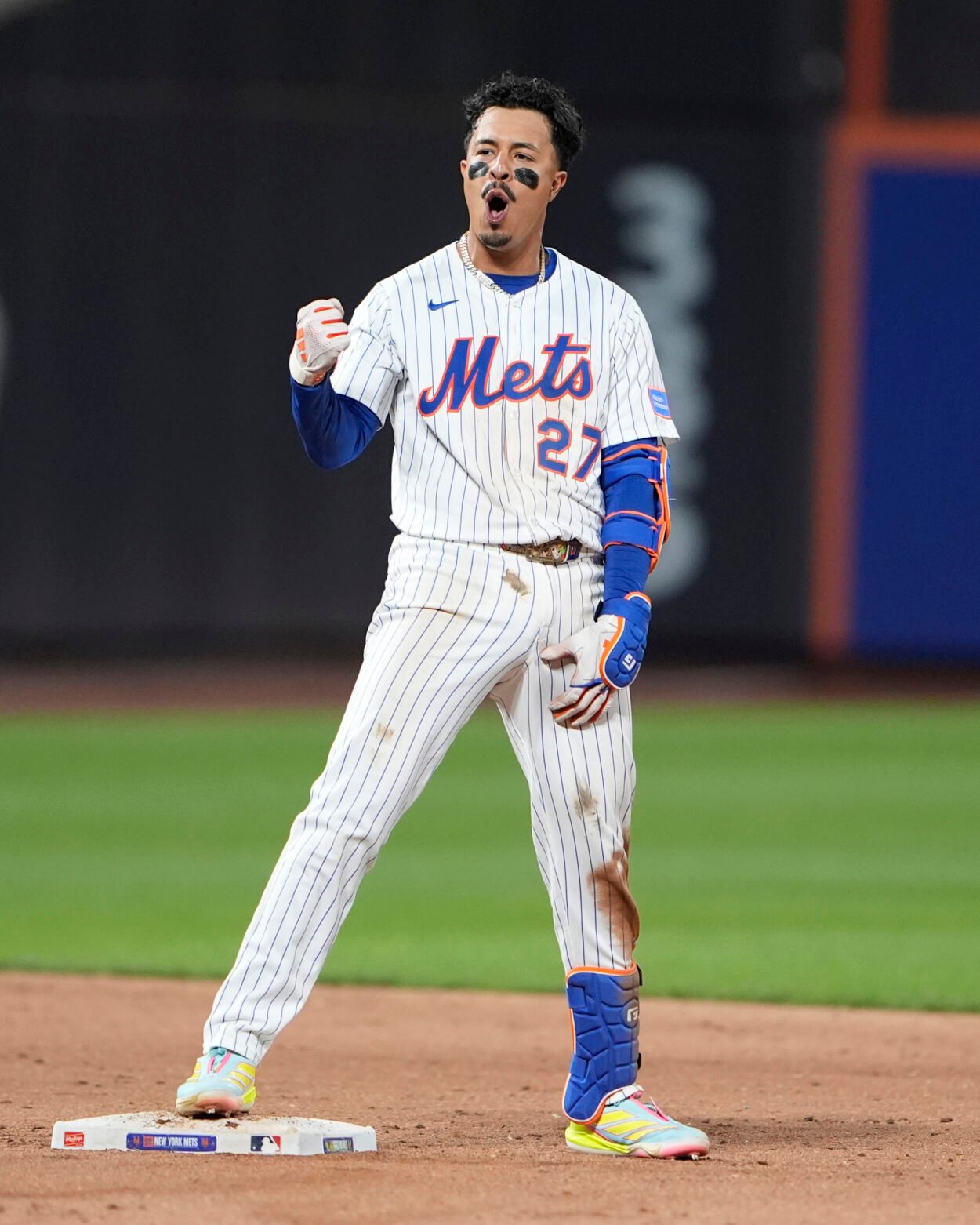
A few players can change the feel of a lineup simply by walking into the box. Mark Vientos did that for the New York Mets in 2024, when every towering fly ball felt like a coin flip between the warning track and the seats. Twenty-seven home runs, a 132 wRC+, and a postseason breakout will do that for a young hitter. The Mets suddenly had a slugger who looked like he was growing into the moment rather than shrinking from it.
The Ups and Downs of a Young Bat
Then came 2025, a season that reminded everyone that development rarely follows a straight line. Vientos wasn’t bad, but the thump didn’t land with the same force. A 97 wRC+ and 17 homers placed him closer to league average than star status, the type of middle-ground campaign that makes evaluators revisit their long-term expectations. Still, nothing about his offensive profile suggests the ceiling has disappeared. If anything, the past two years simply outline the range: the Mets know what the high end looks like and understand what the down cycles can be.
Where the Metrics Sound the Alarm
The real issue sits elsewhere. For all the talk about Vientos’ bat, his glove remains the question that won’t go away. When the defensive metrics say a player is merely passable at first base in a tiny sample, but a significant liability at third, front offices take notice. In just 23 innings at first, Vientos put up -1 DRS and zero OAA. Not a problem. At third base, though, the numbers roll in like flashing red lights: -10 DRS and -7 OAA over 556 innings.

The Mets have watched enough baseball to know that those numbers aren’t flukes. But they’ve also watched Vientos long enough to believe he may still have room to grow.
Kai Correa’s Influence and the Offseason Fix
That’s where the offseason urgency comes in. According to Laura Albanese, Vientos has been working five days a week on his defense, leaning on new Mets bench coach Kai Correa for guidance. Correa’s reputation is well established from his time with the Giants and Guardians. He’s a detail-obsessed infield instructor with a knack for improving footwork and positioning, the kind of coach who can help a player rebuild habits from the ground up.
And Vientos seems all-in. That matters. Over the years, the Mets have seen talented hitters struggle to find a defensive home, and it’s usually the buy-in that separates the salvageable from the unplayable. Anthony DiComo reported that Vientos is specifically working on his lateral range. That’s the first box that needs checking for any third baseman, even one who isn’t expected to be a plus defender. The Mets see him as a multi-position option, and that flexibility only works if the defense can at least hold steady.
The Path Forward for Vientos and the Mets
There’s a long distance between where Vientos is and where an average gloveman stands. No one inside the organization is pretending otherwise. But there’s also value in acknowledging the work. It isn’t glamorous, and it rarely gets the highlight treatment. It’s the grind in between cage sessions, the footwork ladders, the endless reps on short-hops that never make TV.

For the Mets, a version of Vientos who settles somewhere in the middle of his past two offensive seasons and becomes something less chaotic on the dirt would be a meaningful win. It wouldn’t change every projection, but it would reshape how the roster fits together and how often his bat can stay in the lineup.
The Mets don’t need Vientos to become prime Nolan Arenado. They just need him to become playable. And if his offseason workload tells us anything, he’s determined to get there.
